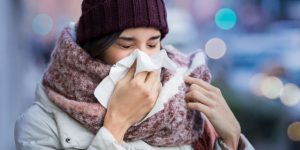
Pollution Comes In Different Forms
Pollution Comes In Different Forms
City life has its perks but one downside can be the effects of pollution on your skin.
Pollution comes in different forms. There’s visible pollution that you can literally wipe off of your skin and see on your washcloth.
And there’s pollution that comes in gas form, such as nitrogen dioxide, sulfur, carbon monoxide, and so on, which aren’t so visible. The bottom line, all forms of pollution can collect on your skin and create an unhealthy barrier.

What does pollution actually do to your skin?
Pollution can be responsible for skin dryness, dullness, clogged pores, some allergic reactions, skin irritations, inflammation, and my least favorite—premature aging.
And the worst part is, this is the shortlist. Pollutants can really affect our face, neck, and hands, as these are the areas that are most exposed on a regular basis.
Also, pollution can make skin extra sensitive. When that happens, it becomes much more susceptible to certain skin irritations.
We can break drown pollution simply into two categories: indoor and outdoor pollution. A few examples of the indoor type include:
- Mold
- Dust mites
- Air fresheners
- Pet Dander
- Carbon monoxide
- Secondhand smoke
- Soot from wood stoves and fireplaces
- Chemical sprays, including hair sprays, furniture polish, glass cleaners, perfumes
Indoor pollutants can cause dry skin and irritation. So, what can you do? The first thing is to improve the overall air quality by allowing fresh air into your home as often as possible. Open windows or doors on both sides of your home to create a real cross breeze.
By constantly freshening the air, you can help dilute the levels of pollutants, which can be of great benefit to your skin. Of course, if you live in an area that’s heavily polluted outdoors, try to keep the air in your home as clean as possible. Commit to freshening up your home on a regular basis to get rid of things like pet dander and dust.
Some examples of outdoor pollutants include:
- Ozone
- Smog
- Ammonia
- Nitrous oxides
- Vehicle exhaust
- Dirt, dust, and debris
- Toxic metals, such as mercury and lead
- Carbon monoxide from fires and fuel combustion
Outdoor pollutants are detrimental because they increase the number of free radicals in our environment—which, studies have shown is damaging to the skin. Free radicals can damage cells over time by encouraging oxidation.
Is there anything we can do to minimize the effects of pollution on our skin? Absolutely. Here are a few quick tips to help counter pollution’s negative effects on the skin.







